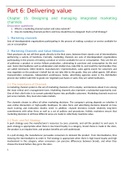Samenvatting
Samenvatting British American Civilization
Dit is een volledige samenvatting van beide boeken British American Civilization British Civilization: H1 - H2 - H3 - H5 - H6 - H9 - H10 - H11 American Civilization: H3 - H4 - H6 - H7 - H9 - H10 - H11 - H12)
[Meer zien]







